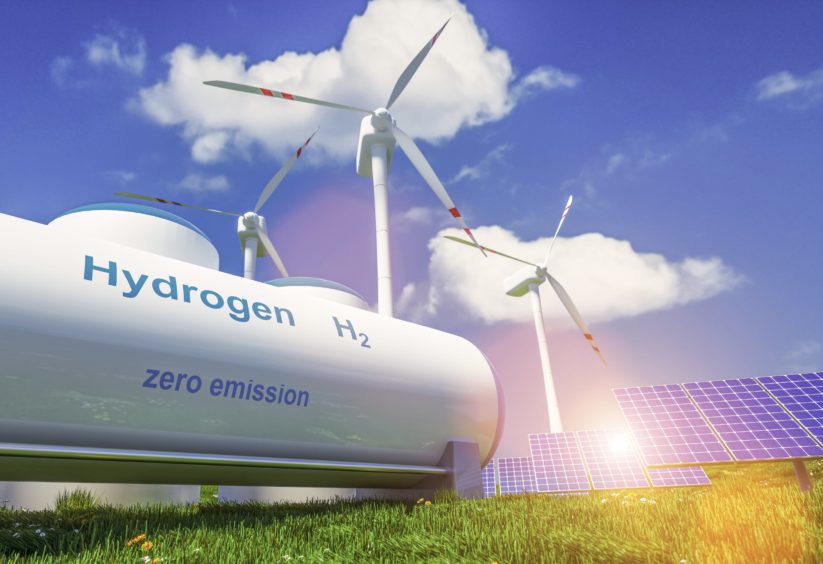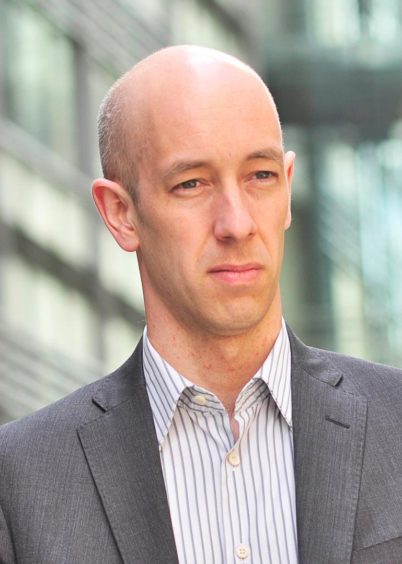
Industry leaders have urged governments to put incentives in place to speed up the deployment and uptake of hydrogen.
During the first session of Energy Voice’s ‘Hydrogen – A Tracking Transition Series’, in association with Deloitte, Fasken and Costain, on Thursday, a panel of experts stressed, in front of hundreds of attendees, the importance of creating both supply and demand for the fuel.
Daniel Grosvenor, renewables leader at Deloitte UK, said that while hydrogen is “very versatile”, meaning it offers a solution to a multitude of problems, that creates challenges of its own.
He said: “Do we incentivise production or consumption? How do we deal with the switching costs and make sure we have the demand there, if we’re incentivising people to produce low carbon hydrogen?”
One of the key barriers to hydrogen currently is the lofty costs involved, especially when compared to other energy sources.
In order to get the ball rolling, there’s a need for governments to create an investment-framework to encourage private capital to get behind the technology.
Benj Sykes, vice president UK offshore at Danish renewables giant Orsted, said a Contracts for Difference (CfD) mechanism, like the one used for offshore wind, could be a “real solution”.
The scheme, which gives developers and investors long term assurances around energy prices, has been praised for encouraging the expansion of offshore wind in the UK.
And setting up a similar system for hydrogen would “not be complicated”, said Sykes.
He added: “It’s not difficult to put in place and it doesn’t need to be a massive scheme. It just needs to be enough to get these early projects going.
“There’s a lot of verbal momentum in hydrogen and a lot of projects that are going to happen, but we need to make them actually happen. Our focus very much is on making sure that those early mechanisms are in place that will force the technology cost curve to come down, while we sort out that wider, longer term framework.”
Rob Phillips, energy sector director at Costain, echoed Sykes’ comments, adding that there is “pump priming” going on from the government, but that the industry needs to see a “real underpinning” of CfD.
“It would allow us to ensure that the investment really comes when there’s an investment decision to be made. In 18 months’ time, a lot of projects will be coming to their final investment decision and we really need to see a model working effectively to allow them to be made,” he said.
There was optimism amongst the panellists though that the energy industry has the expertise and knowhow to create a large scale hydrogen market in the coming years.
Mark Lewis, chief sustainability strategist at BNP Paribas Asset Management, said the success of other renewable sources since the turn of the millennium acts as a great example.
“We have the template – If you go back 15 years, nobody would have thought possible that we would have reduced the costs of solar and wind. People weren’t even talking about offshore wind in 2005. But, when you have the subsidies there it attracts capital and when you do that, you get a technology boost and the costs start to come down,” he said.
Oil and Gas
During the virtual ‘Making the Market’ event, which was partnered with Orsted and BNP Paribas, the panellists also issued a stark warning to the oil and gas sector.
Responding to a question from Energy Voice editor Ed Reed about the role of the majors in the future success of hydrogen, Daniel Brock, a partner at Fasken and co-lead of its hydrogen energy advisory team, said: “It’s transition or die for the energy companies – the sophisticated ones have seen this.
“Hydrogen is the lesser evil of electrification for them. In the transportation sector, the transition to a hydrogen-based vehicle is an opportunity for energy companies to produce the fuel that can be consumed. It also gives a purpose to preserve their forecourts and there retail operations.
“It leverages their existing infrastructure and sunk costs in their networks and allows them to transition to a greener energy.
“There is a recognition that, at some point, the majors need to be ahead of this transition and driving it in certain markets. Else, they will find themselves entirely at the side of the road.”
The Hydrogen Rainbow
Which type of hydrogen is best and which will be needed to get the industry off the ground is a topic of hot debate currently, and Energy Voice’s event was no different.
The fuel comes in a rainbow of colours, with each denoting how it is produced.
In the context of the energy transition, the primary colours are blue, which is made using natural gas with the emissions locked away using carbon capture and storage, and green, which uses renewables energy to produce hydrogen from water through a process called electrolysis.
But, in the “very short term”, Phillips says that grey hydrogen, which is emissions producing, could be used to “stimulate supply”.
He said: “You can go through a transition over a number of years with your hydrogen network actually being non-decarbonised. Then you transition 100% and move over into green or blue hydrogen.
“There’s a lot of thinking going on about that at the moment and we’re working with a number of companies on it.
“The really important point is getting the demand and the supply together at the same time. It’s great to develop a scheme to feed hydrogen into the gas grid but you need that downstream demand.”
Looking ahead to net zero and the extent to which blue and green hydrogen should be positioned; there was mild discord amongst the panellist over the best approach to take.
Brock said there was a danger the industry could get drawn into a “false debate” over “how clean is your hydrogen”.
He added: “In its end use, hydrogen is always going to be cleaner than fossil fuel. Finding ways to incentivise the use of hydrogen, whether its green, blue or grey, early coin is very compelling.”
However, Sykes contended that point, saying that, although the industry needs to get on with both colours right now, green hydrogen would “ultimately” become cheaper.
He said: “I’m not sure I fully agree that it doesn’t matter between blue green because they’re both equally clean. CCS is going to be really important as a means of dealing with some emissions that we can’t remove in other ways, but I don’t think hydrogen production ultimately is going to be one of those.
“As we’ve discussed previously, we’re going to see green hydrogen come down the cost curve to the point where it’s going to be cheaper than blue hydrogen anyway.
“I think we need to get after both I’m pretty convinced that green hydrogen will ultimately be the one that that delivers the lowest cost and lowest carbon solution.”
There have been around 1,500 registrations for the full four-part series with 659 tuning in to watch Session 1, Making the Market, live.
Many of those who registered but couldn’t attend on the day will watch the recording of the session on demand and you can do so too via this link: https:/ /bit.ly/trackinghydrogen
Recommended for you


 © Courtesy Deliotte
© Courtesy Deliotte